|
The staff of St Claire’s Ward organised a Coffee Morning plus Cake Sale in the main reception area of the Mary’s Meals raising a huge €4,190 to mark the retirement of Geraldine Gohery Mary’s Meals work with some of the worlds poorest communities in 18 different countries. They set up feeding programs in places where hunger and poverty prevents children getting an education. Daily meals are provided in schools to encourage children who other wise would be either working or scavenging for food. Education offers a route out of poverty. 5 years ago Geraldine was inspired to get involved in Mary’s Meals. With the help of two other volunteers, Helen Keane and Marie Burke they have been fundraising to sponsor a school Milimba in Zambia. There are 478 children attending the school. It costs €10,516. per annum. This breaks down to €22 per child for a whole school year. Geraldine would like to sincerely thank everybody for their exceptional generosity and those who supported this fundraiser and helped in anyway.
Special thanks to Lucy Kelly, CNM2 and Irene McArdle,CNM1, Managers of St. Claire’s Ward, James Keane, Hospital Manager and Mary Mahon, Director of Nursing. NO FRILLS Over 93% of all monies raised goes directly to feeding the children. Mary’s Meals will only go into a school where they are given a commitment from local volunteers to prepare and cook the food. For further information on Mary's Meals or contact Geraldine Gohery 0876708020.
1 Comment
Ballinasloe Musical Society will celebrate a century of music and drama with a special Centenary Concert which will take place on 21 st October at 8pm in the Ballinasloe Town Hall Theatre.
This will be a musical extravaganza with songs from a variety of much-loved past performances, including Oklahoma, Singin’ in the Rain, South Pacific and Calamity Jane to name but a few. A selection of leading ladies and gentlemen will perform on the night, including Catherine Smyth, Sarah Corcoran, Seán Óg Hurley, Louise Colohan, Séamus Feerick, Rachel Goode, Patrick Byrne, David Kennedy and more. A large ensemble of past and present members will also come together to perform, with all welcome to join. Don’t miss this once in a lifetime celebration of music, culture and community that will pay homage to the 100 years of live performances by Ballinasloe Musical Society , with National Broadcaster Fergal Darcy as MC . Tickets are available on www.ballinasloetownhall.com. Production team for their 2023 run of 'Godspell', which will take place from 19th - 23rd March 2023 in the Town Hall Theatre. New to the reigns as Director is Tuam native, Ronan Lardner, who will be familiar to many as the voice of The Live Wire, the lunchtime show on Galway Bay FM. No stranger to musical theatre, Ronan has most recently directed shows in Tuam and in Castlerea. Another new addition to the team is Jay Molyneux, who will take on the role of Choreographer. Also a Galway native, Jay has been performing since the age of 7 and is a full time dance teacher at the Genevieve Ryan Dance Academy. He has choreographed and directed many shows throughout the western region. Members and Cast are thrilled to welcome back the Maestro, Shane Farrell, as Musical Director, for his 10th show with the Society. Shane, who lives in Loughrea, is renowned country-wide for his work as a choir master and musical director, as well as for his fundraising endeavours, including most recently, the recording of Sing for Saoirse, which took place in the Ballinasloe Town Hall Theatre in July, and is due for release in October. Plans for auditions for Godspell are being put in place and a date will be announced very soon. Keep an eye on Ballinasloe Musical Society's social media pages for more! Dates – Tue Nov 1st and Wed Nov 2nd at 8.00 pm in Gullane’s Hotel. A fresh vibrancy to Heritage Week this year was evident all around locally. Members of the Society were involved in a number of projects and the Society itself held a number events that had fantastic interest and turn out over two weekends.
In the library, Dr Geraldine Curtin gave a talk on the 19th century reformatory school in the town, there was a collaboration with Group 8 and Aughrim 1691 to create an art exhibition themed on the Battle of Aughrim, and there was a walking tour of the town on National Water Heritage day that brought over 100 people out, and a couple of dogs, to hear talks and songs linked to water related landmarks around the town from local archaeologists, historians, authors and balladeers. In advance of St Grellan’s Day on September 17th, the Society put an emphasis on telling the story of the town’s patron saint, with a particular focus on bringing the story to a new generation of children. Teaming up with Milkshake Dance and Performance Academy , the children learned the story of St Grellan through the medium of Rap and Hip Hop. The children recorded a video of the rap and hip hop dance which was put out on social media and was a fitting tribute to the patron saint of a culturally and religiously diverse town. Local Historian Pat Johnston also did presentation class to Ms Blade and Mr. Ronaldson’s 4th classes in Creagh School on St Grellan and his ‘Bacall’. Mass was also held in honour of former Patron Saint of the UI Maine Kingdom at Tobergrellan. Their monthly public meeting takes place at 8pm on October 4th in the Men’s Shed, Cullen’s Yard (behind the Credit Union) and as it’s fair week, local historian Barry Lally will give a refresher on the Great October Fair. On 24th October at 7.30pm in Gullanes Hotel, Dr Christy Cunniffe will give a talk on the outstanding examples of stained glass in the churches and chapels of Ballinasloe, along with the town’s ecclesiastical sculpture and art. A fundraising table quiz for the Society will take place of 22nd November at 8pm in Gullanes (tables of 4 - €40) and details of the membership plan for 2024 will also be launched on the night. Chairperson Conor Johnston stated ‘following a fantastic response to the setting up of the Heritage Society, we are looking forward to growing the Society to provide a framework for a plan of scale to preserve, protect and promote the heritage and history of our town. Our area has a history and heritage of real substance, be it architecturally, archaeologically, or industrial, through sport, music and a rich social and cultural fabric and it deserves a space to celebrate this. We particularly want to reach out to, and collaborate with, other community groups to achieve this’. You can visit the Ballinasloe and District Heritage page on FACEBOOK and INSTAGRAM to keep updated! Works are ongoing on Society Street, Ballinasloe, transforming the Old Bank Chambers building into a remote working hub, aptly named the “Ballinasloe Enterprise Hub”. This Enterprise Hub is a sister building of the Ballinasloe Enterprise Centre in Creagh.
BACD Clg, the new owners of the building are carrying out the project works and are currently looking for formal expressions of interest from prospective users/tenants. Manager of the project Lyn Donnelly stated ”Since we started the renovation, we’ve had high interest and as a result started an informal waiting list. We have contacted everyone on that list and are now reaching out to others who may have an interest in availing of space. This will allow us to gauge the demand and fully optimise the space in the hub”. The works commenced on site in March 2023 by John McNamara & Sons Ltd and are scheduled to be completed in the first quarter of 2024, which will also coincide with the BACD clg 25th Anniversary. The project was given a welcome boost recently with grant aid received from Galway Rural Development through the LEADER programme to purchase the furniture for the hub. The total cost of the project is over €1.5m and as BACD is a not for profit community development company were eligible to apply for partial grant funding. Funds were received from the Just Transition Fund, the Town & Village Fund & GRD LEADER Programme. BACD are backing the project with their own reserves and a business loan from Ballinasloe Credit Union. When the project is completed, the building will be able to cater for over 40 people. If anyone is interested in renting space or using the hub for meetings, remote work, co-working space, enterprise space or hotdesking the Expression of Interest form is available HERE or by contacting Lyn Donnelly at [email protected] or 090 96 46516 By Liam Timmons Echoes of the Chenda Melam drums filled Moore Community Hall where the Ballinasloe Indian Cultural Community hosted another fantastic occasion celebrating the vibrant Onam festival. Among the pageantries were dance performances, instrumental performances, and a mouthwatering culinary journey of the country’s best cuisine. This is the second event hosted by the BICC following the success of the EVE-23 gathering in April. Onam itself is a 10-day celebration welcoming the rice harvest, with roots in South India. Additionally, the period commemorates the exiled King Mahabali’s annual return to his state of Kerala after being banished by his opposition. The festivities at Moore Hall saw over 300 participants, including representatives of both the Indian and Irish communities. Activities commenced as early as 07:00 with the creation of Pookalams, carpets of intricate floral designs created by hand. At noon, a formal inauguration ceremony marked the official beginning of the day. A captivating recital followed of the Chenda Melam, a traditional percussion ensemble, along with a group performance of the graceful Thiruvathira dance. The event peaked when a talented group of approximately 50 performers came together for a beautifully choreographed flash-mob, dancing in harmony with a fusion of diverse musical styles. However, the highlight for many attendees was the grand Onam Sadhya, a feast featuring 19 distinct vegetarian dishes. The culinary experience showcased a variety of flavourful plates native to Kerala cooked by volunteers in the community. Dancing and musical recitals continued late into the evening with groups competing for the best performance. The night crowned team Manjappada as champions, followed by second place team Chembada, and third team Shamrocks. The BICC committee were pleased with the events success as a heartwarming family gathering where numerous Irish and Indian guests enthusiastically participated. They expressed their enthusiasm for organising future occasions, intending to host more inclusive and open gatherings for the Ballinasloe community and surrounds which foster cultural exchange and solidarity. BICC President Aju Abraham thanked the events many sponsors including the Ballinasloe Credit Union, Money Maximising, Viswas, Asia Land, Nearby Athlone and Confident Travel Limited. Further updates on upcoming and ongoing activities can be found on their Facebook page at “Bicc Ireland Malayali”. With the completion of major groundworks at home and the launch of a kickstart mobile app, Ballinasloe RFC have seen many positive developments during the past months. Lately, many underage players have been emerging with great triumphs, laying a new foundation on the club’s enduring legacy.
Among those are Róisín Power and Catherine Fleming, who both were named to the Connacht U18’s Women’s squad over the Summer. Upon their appointment, the girls trained at bootcamp in Belfast and have since been engaged in their Interprovincials. The U18’s advanced with a 13-5 win over Munster at Musgrave Park, with sights set next on their bout against Leinster. Playing in warm and sunny conditions against fierce opposition, the game was no easy task. After ten minutes of an apparent stalemate between the two teams, Róisin Power breached a strong backline to open the match with a try. The squads went on blow for blow over the remaining runtime, with Connacht eventually taking the day at 19-15. Both girls showed great grit during the final minutes, defending their lead till the bitter end. Meanwhile U19’s Sean Power and U18’s Joseph Smith were named to their respective provincial teams, the later securing his series with a final day victory against Ulster. Aishling Keighery, Róisín O Sullivan and Prudence Mwase were selected on the U16’s Connacht squad at the High Performance Centre, competing against all three regional squads in the Interpro Blitz. The Senior men’s team will compete the Connacht Junior 1B League for the 23/24 season following their promotion, kicking off in early October against Corinthians RFC. The club intends to field a second ‘A’ team for the upcoming year. The club also completed its latest two phases in development plans with the construction of a storage shed and the lay down of a high quality, leisure track along the ground’s perimeter. The walkway, grant aided by Clár, is open for public use although dogs are not permitted on the facility. The next phase of developments will seek the replacement and upgrading of the pitch lighting. A new welcome addition to the club consists the launch of the ‘Ballinasloe RFC’ app, the first of its kind in Connacht. Updates on all activities, news and fixtures from the Broncos to Senior squads can be found on the platform and can be downloaded from the Apple or Play Store. By Evelyn Donellan In January 1944 Mr J.J Bergin, Secretary National Ploughing Association arrived to town accompanied by Mr Cotter, Agricultural Instructor, Roscommon to examine a field in the area with a view to hosting the National Ploughing Championships there.
A meeting in the town itself on the day, had a large attendance from the farming community in the wider environs. Satisfied with the inspection Messrs Bergin & Cotter the National Ploughing Committee decision to go ahead thirlled members of the farming and business communities during the period known as the Emergency. The field was was about one and a half miles from Ballinasloe. Previous ploughing competitions held in the area had attracted the attention of the National Ploughing Committee, this coupled with the co-operation of farmers and people of the locality had left a positive impression on both participants and spectators. John Cobban, Shanboley and John Cunningham were highly commended for their trojan work in the successful organising of similar events. Mr Cotter was confident that a substantial grant would be given from the Agriculture Committees of Galway & Roscommon. A general committee was formed which included members of the local clergy, County Managers, Galway & Roscommon, Secretaries, Agricultural Committees of both counties; members of Ballinasloe Urban District Council & Chamber of Commerce; business people and members of the farming community within a five mile radius. An advertisement in newspapers with the heading “God Speed the Plough” appealed to the public for funds and assured donors of a receipt to be issued on the spot from committee members, Chairman John Cobban; Hon Sec John Cunningham and Bank of Ireland Agent, John Fitzpatrick the Treasurer. Readers were encouraged to “give generously & give promptly”. It was said “the greatest ever-known assembly of wheel ploughs would be seen at Ballinasloe when the four champions from each of seventeen counties would bring their own ploughs to be drawn by eighty pairs of splendid farm horses loaned to the committee by the farmers of Galway and Roscommon”. The two mile road leading to the site of the national event was repaired in good time for the comfort of travellers both human and animal. The “swing” style of ploughing was to make a return enabling all counties to compete in the championship on “terms as nearly equal as can be designed”. A standard of flat ploughing had been established in Leinster & Munster, but not in the north or west, thus excluding Galway from national competitions. This style of ploughing was generally unsuitable for use in the west due to high rainfall, which didn’t allow the soil to dry sufficiently for spring sowing. At that time Galway was the only county to have a printed book of rules for the guidance of county competitions. After discussions it was agreed to adopt a new national standard of ploughing referred to as “bowl-shaped” – a compromise between the Leinster flat and the Connacht partly upright ploughing. It was to be performed using a wheel plough and coulter, suiting all participants as it needed to be well skinned and packed. The County Galway Junior Cross Country Competition was also held on the same day. The All-Ireland Turf Cutting Competition had seen a large influx of people when held in Ballinasloe in 1930s and similar attendance was expected at the ploughing event. Judging by a contest held in Portlaoise the previous year it was expected the ploughmen would eat two tons of bread. The ladies of the local branch of the Red Cross were enlisted to help in catering for the masses. On the eve of the event the town welcomed over eighty ploughmen and many officials who were accommodated in local hotels and private houses. The 14th National Ploughing Championships were held at Ballinasloe on 9 Feb 1944 in a forty- acre field at Ashford, provided by Michael Naughton, which had not been ploughed since famine times. The contests were to begin at 11am and end at 4pm with results announced at 7pm in Ballinasloe. Competitions were held for senior, junior, under 30, under 21 and for the best pair of horses. Several traders attended advertising their products to farmers. One such was Golden Grain, a mercurial seed dressing, manufactured by Hygeia, Galway, said to yield the perfect grain, beet, mangold and turnip crops! Other attractions included tossing the sheaf and guessing weights. A Ceilidhe and dance was held in the Town Hall that night. In 1944 ploughing was predominantly horse drawn, as mechanisation did not fully evolve until the late 1940’s and early 1950’s, due to shortages brought about by World War II. The first tractor ploughing class was introduced in the National Ploughing in Cloghran, Dublin in 1942. In excess of seventy ploughmen from seventeen counties took part in Ashford in 1944, with an attendance in the region of seven thousand. Dignitaries in attendance were Bishop of Clonfert Most Rev Dr Dignan, Patron; Dr Ryan, Minister for Agriculture; Mr F. Fahy, Ceann Comhairle; Mr P. Smith, Parliamentary Secretary to Mr de Valera and Mr D. Allen, T.D., President of the National Ploughing Association. Farmers in the area provided about one hundred and fifty horses to the visiting teams. Prize-winners were: Senior: 1st Wexford 2nd Wicklow 3rd Kilkenny; Junior: 1st Galway 2nd Westmeath 3rd Tipperary North; Senior Individual; William Kehoe, Wexford; runner up, Stephen Dempsey, Wexford: Junior Individual M. Ward, Galway, E O’Meara, Tipperary North. The Wilson Prize, a complete set of harness, went to the ploughman (under 30) who secured the highest marks in National Style Ploughing. The standard of ploughing was said to be greater than the previous year especially in the youth competitions. The R.D.S Cup for the best pair of Irish Draught horses was withdrawn as entries were not up to standard. Patrick Mulvey, Cloniffe, Thomastown won a prize for the best pair of farm horses. The ladies committee were held in very high esteem as the efficiency in which they provided hearty meals to attendees was said to set a precedent for future events throughout Ireland. Later that year a social, organised by members of the local ploughing committee, was held at O’Carroll’s Hotel. Mr John Cobban presided as eighty people were catered for by hotel staff. Mr Nicholas Cotter stated that of the fourteen annual National Ploughing Championships held so far, Ballinasloe was the most successful. This success was largely due to the magnificent work of the ladies who looked after the catering, the farmers and the public who gave great encouragement for the event. Others who paid tribute to the high standard of hospitality were Rev Fr Hughes, Adm., Chief Supt. Doyle, Supt O’Halloran and Maurice Glennon, Principal of the Vocational School. Mrs Cunningham replied on behalf of the ladies. By Damian Mac Con Uladh
Since the successful publication of Killure–Kilgerrill: Its People and Places late last year, Killure Heritage Group took on the task of enhancing the information that was already on the FindAGrave website for Kilgerrill Graveyard, completing the entries on the 150 or so people known to be buried in this small, remote cemetery between Ballinasloe and Kilconnell. Where we could, we added birth/marriage/death dates for the people buried there and linked the various families together and were also able to link the resting places of some emigrant offspring back to their parents in Kilgerrill. In addition, the people who are named on the 30 or so memorials in the graveyard, we were also to add the names of another 12 people we know are buried there from press reports and death notices but are not named on any headstone. On a bitterly cold morning last Christmas, when I was double-checking some inscriptions with TJ Cleary and Gerard Jennings of Killure Heritage Group, a visitor arrived at the cemetery and soon enquired if we knew where the Kenny grave was. TJ was able to help. It turned out that the visitor, Trish Schroeder, was a great-great granddaughter of Peter Kenny (1844–1909) and Margaret Walsh (1851–1916), of Northbrook, Kilconnell, and that she had come all the way from Illinois to retrace her ancestors. Trish had known her great-grandfather Peter Kenny had come from Ballinasloe, but it was only when she saw the headstone on FindAGrave around the time that we had updated the information on it that she knew where to visit. The chances of meeting someone else while visiting Kilgerrill cemetery are slim so the timing couldn’t have been better. As Trish said, some of her Kenny ancestors must have been looking out for her. With TJ’s knowledge, I realised that I know Trish’s second cousin once removed in Ballinasloe, Anthony Lawless, and I was able to put them in contact. Trish says that her grandfather James Brendan Kenney – who was serving in the US Army in Europe at the time – visited Kilgerrill sometime in the 1950s and she produced a photograph from that visit. She was keen to identify the other men in the picture. Mary McLoughlin of Aughrim, whose Goode ancestors are buried in Kilgerrill, contacted Mary Rocke, who was able to put names on the other three. Link to Kilgerrill graveyard 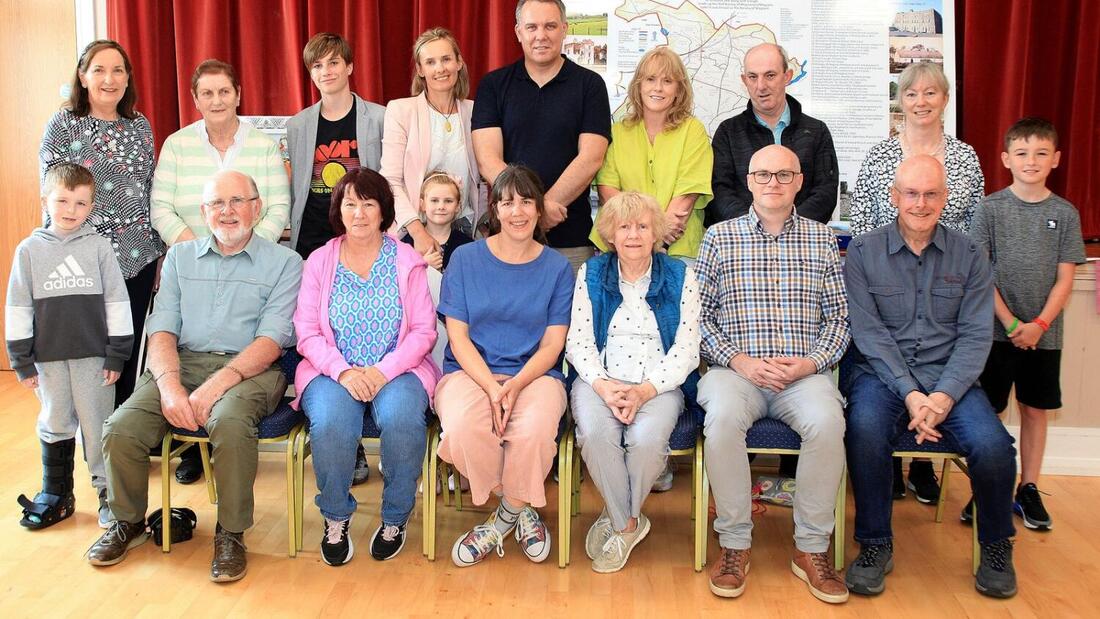 Relatives of cross country runner John Flannery Back row, from left: Evelyn Donellan, Kathleen Glynn Fallon, Adam Flannery, Anna Flannery, Sean Flannery, Patricia Giles Page, Andrew Page and Patricia Williams. Front row, from left: Caedan Downes O’Brien, Oliver Donellan, Angela O’Brien, Arianne Flannery, Karen Flannery, Frieda Flannery, Peter Flannery, Nigel Williams and Sean Downes O’Brien. Information banners and historic displays decorated Moore Community Hall during their Heritage Night, depicting the community’s history and offering attendees a glimpse of their shared past. Organiser Xandra Kilduff opened the proceedings introducing Father Michael Molloy, parish priest. Fr Michael launched the Heritage Map Board for public display, designed by graphic artist and historian Padraic Kilduff. What ensued was a day of events for families and visitors alike. Those attending were treated to banners depicting historical places in the parish, a display of the Peter Naughton Collection of vintage farm implements, unusual bottles containing carved images of master craftsman Eddie Henderick, and a painting of Saint Caireac Dergain of Clonburren by Padraic Kilduff. Nollaig Feeney, Heritage Officer from Roscommon, paid a visit, as well as some companions from the Ballydangan Grouse Project . Moore sportsman John Flannery was honoured with a presentation dedicated to his longstanding running career and influence in the community. His niece Patricia Williams showcased some of his many medals spanning his years, now on loan to the hall. Also contributed were a display of books and photographs of his sporting achievements by Nigel Williams. Frank Greally, a friend of Flannery and retired editor of the Irish Runner Magazine, spoke of his era and the wonderful friendships he built in the field of track and race . He later presented Patricia with a Memorial candle, inscribed in her uncle's memory. Also in attendance were some past friends, including Padraig Killeen and Martin Mulvey. A short film of John practising with the Moore Athletics (a club he helped re-organise) was shown alongside an audio recording with James Dockery some years ago. The framed presentation on the sports superstar will remain on exhibit at the Community Hall, inspiring young athletes to match his accomplishments. Before closing out, a DVD was shown documenting a significant day on the community’s calendar. Made some years ago by former Moore Community Chairman Padraig Egan, the video explored the gathering of cars, tractors, ponies, and bicycles to wonder at the arrival of a heavy threshing machine. Within the frames - women were featured baking bread outdoors over open fire, and faces of many locals were shown who have since passed. Many dozen attendees returned home with a greater insight of their parish’s story. The gathering was considered a success by organiser Xandra Kilduff, who you can only assume is already gearing up for next year’s event. Thanks to Sarah Moore for the photos By Barry Lally The Connaught District Lunatic Asylum at Ballinasloe, which opened its doors in November 1833, initially served counties Galway, Roscommon, Mayo, Sligo and Leitrim, and was established under the Lunacy (Ireland) Act of 1821. It was one of 22 such institutions built between 1810 and 1870. The architect was William Murray, whose design was influenced by the panopticon concept devised by the Utilitarian philosopher Jeremy Bentham. The principle behind this layout was to enable the manager and his staff to occupy a central structure with radiating wings from which they could monitor and administer life within the institution. This arrangement allowed the wings to be viewed from the centre, while access was only possible from one wing to the others by passing through the centre.
When the plan for the asylum was first mooted it was announced that provision would be made to accommodate 150 lunatics (schizophrenics) deemed curable. This was immediately denounced as a waste of taxpayers’ money. Doubts were expressed that in the whole of Ireland there could be so many insane persons. It was felt that advertisements would have to be placed in the newspapers to attract patients. Advocates of the asylum proposed an enlightened regime whereby the inmates would be treated with kindness in a setting approximating to a home environment. This, it was believed, would have a positive effect on their prognosis: an idealistic project which, however, never came to fruition for reasons soon to become apparent. Recruiting suitable staff proved to be an intractable problem. Asylum keepers were regarded as the dregs of society engaged in an occupation no respectable young man or woman would dream of taking up. Most of the initial staff members in Ballinasloe had been under notice at St. Patrick’s Institute and the Richmond Asylum in Dublin for gross misconduct, and were given the option of transferring to the Connaught District Asylum. Because of the near- impossibility of finding replacements, the Ballinasloe Board of Governors was obliged to turn a blind eye to their often drunken and lewd behaviour. The first medical officer appointed was Dr. William Heise, who had been managing the Richmond Asylum and was removed from his post in 1831 because of the poor condition of the institution. His appointment to Ballinasloe was terminated after it was discovered that he had made a patient, Emma Kirwan, pregnant. He went on the pursue a successful medical career in Australia. Admissions to asylums were governed by the Dangerous Lunatics Act of 1838, legislation which remained in force, though amended from time to time, up to 1945. Anyone could bring an accusation of dangerous lunacy against another person. Having the accused committed involved a certificate from a medical practitioner and an appearance before two justices of the peace. The so-called lunatic would then be sent to the county jail and from there to the asylum. This had the effect of associating insanity with criminality in the public mind, which impacted negatively on how mental patients were treated well into the following century. Once the legal procedures had been followed, the asylum was required to admit and detain the individual in question regardless of his or her true state of mental health or whether the institution could properly accommodate them. A consequence of the 1838 Act was that the asylum quickly became unmanageably overcrowded. Workhouses used the institution to offload their senile and feeble-minded inmates. It became a dumping ground for society’s rejects in a country that had an apparently insatiable hunger for institutionalism. “The Irish asylums,” a critic has written, “were primarily social rather than medical creations, expanding to meet societal and community requirements, rather than demonstrative medical needs.” In 1951, the town of Ballinasloe had a population of 5,596, of whom no fewer than 2,078 were patients in the mental hospital. The magnitude of the latter figure can be best appreciated when it is recalled that since the 1870s the Ballinasloe institution’s catchment area had been restricted to counties Galway and Roscommon. In 1924, Ballinasloe Asylum was re- named “The Mental Hospital”, surely a problematic change in light of what a contemporary report had to say: “There is an appalling difference between the mental hospital (as an asylum should be) and an ordinary hospital, that in the latter each kind of disease is carefully treated by the best methods, whereas in the former no type of mental disease is fully treated.” Another rebranding occurred in the late 1950s when the authorities chose “St. Brigid’s Hospital” as a sop to popular prejudice, a name that had no association with either the history of psychiatry or the local area. It’s not without significance that at the time there was no question of re-naming, say, Merlin Park or Roscommon County Hospital, presumably because the patients treated at those facilities were suffering from “respectable” conditions that didn’t need to be concealed behind the moniker of a mythical figure. It was not until the 1930s that significant improvements in the institution took place. By now, more members of the nursing staff had formal qualifications. Dr. Ada English promoted occupational therapy, and later in the decade the Admissions block, as well as St. Enda’s and St. Joseph’s, the latter a TB isolation unit, were built. In December 1939 convulsive therapy, using Cardiazol to induce seizures, was introduced, later to be superseded by electroconvulsive therapy. The mid-1950s saw the widespread use of anti-psychotic drugs such as Largactil, which were effective in suppressing symptoms if not in curing the underlying conditions. In the 1980s the emphasis shifted from institutional to community care, so that by 1986 resident patient numbers had fallen to 876. This trend continued, leading eventually to the closure of the hospital in 2013. Today the only part of the complex functioning as a mental treatment unit is a mixed ward, known as the Creagh Suite, catering for up a dozen dementia patients in the Admissions block. The rest of the building is given over to administrative offices. Unfortunately, the original 1833 structure on Church Street was never adequately secured against trespassers. As a result, it has become a prey to vandals and a happy hunting ground for the makers of sensationalist youtube videos. What a sad fate to befall an architectural gem of historical importance once compared to a palace! |
CLICK HERE to read the Latest Ballinasloe News Articles
June 2024
|
The Town Team was set up by BACD Ltd. to revive the fortunes of Ballinasloe and its hinterland. With the main focus to build on the town’s many strengths, change existing negative perceptions and bring about measurable improvements in the town centre economy and its wider social value.
|
Ballinasloe Area Community Development Ltd.
Ballinasloe Enterprise Centre Creagh Ballinasloe Co. Galway |
All generic photos and images have been sourced and are free of copyright or are clip art images free of copyright. Photos of Ballinasloe have been donated by BEC. If you have any photos that you would like included on the website please email us
Copyright © All rights reserved, 2024 BACD

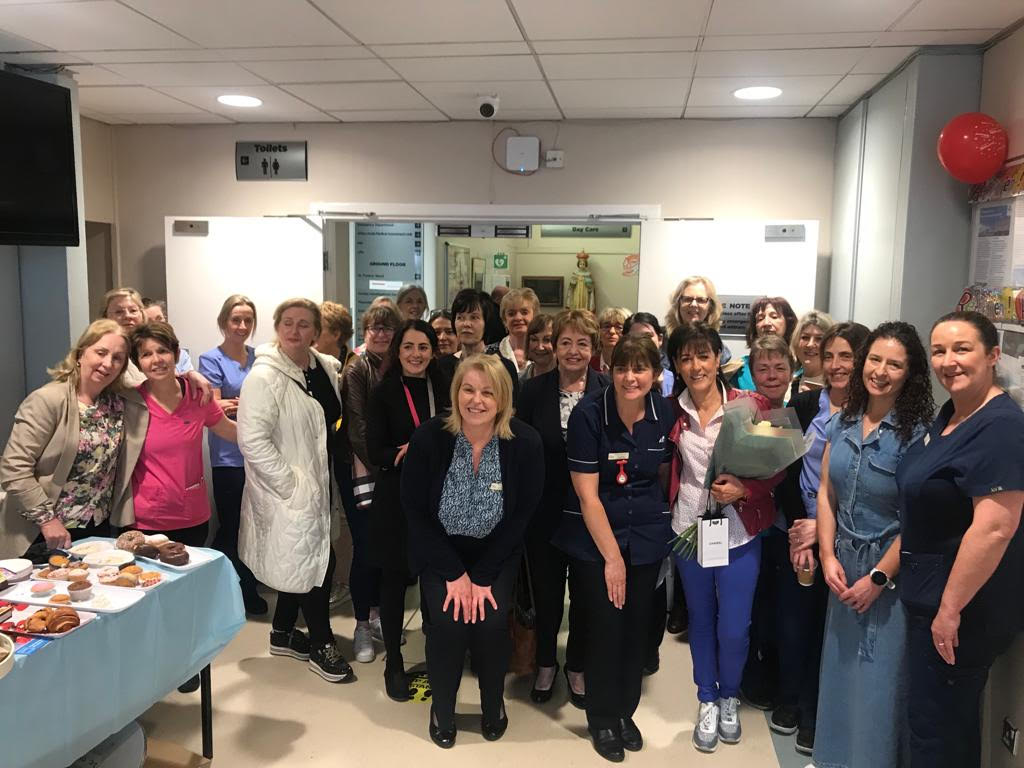
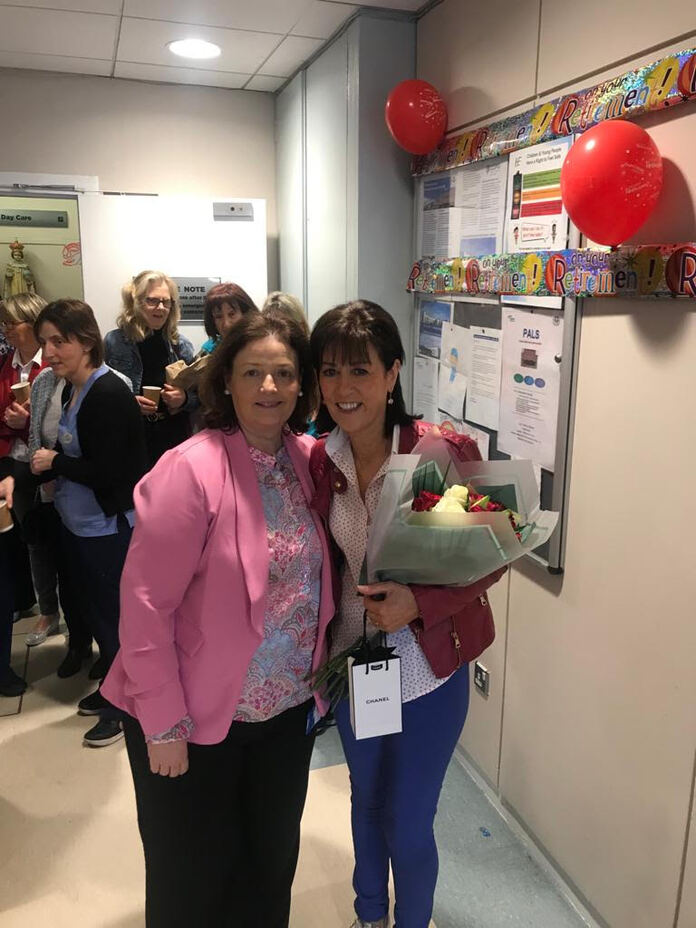

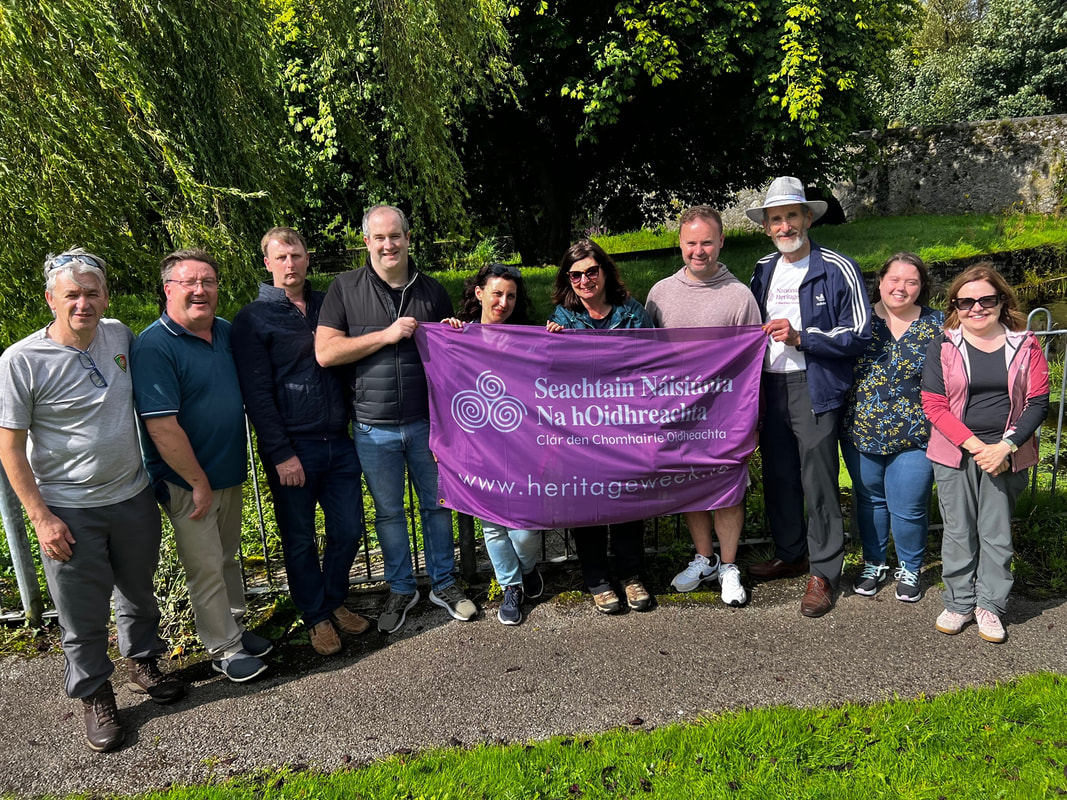
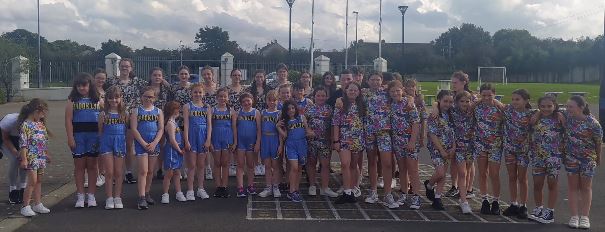


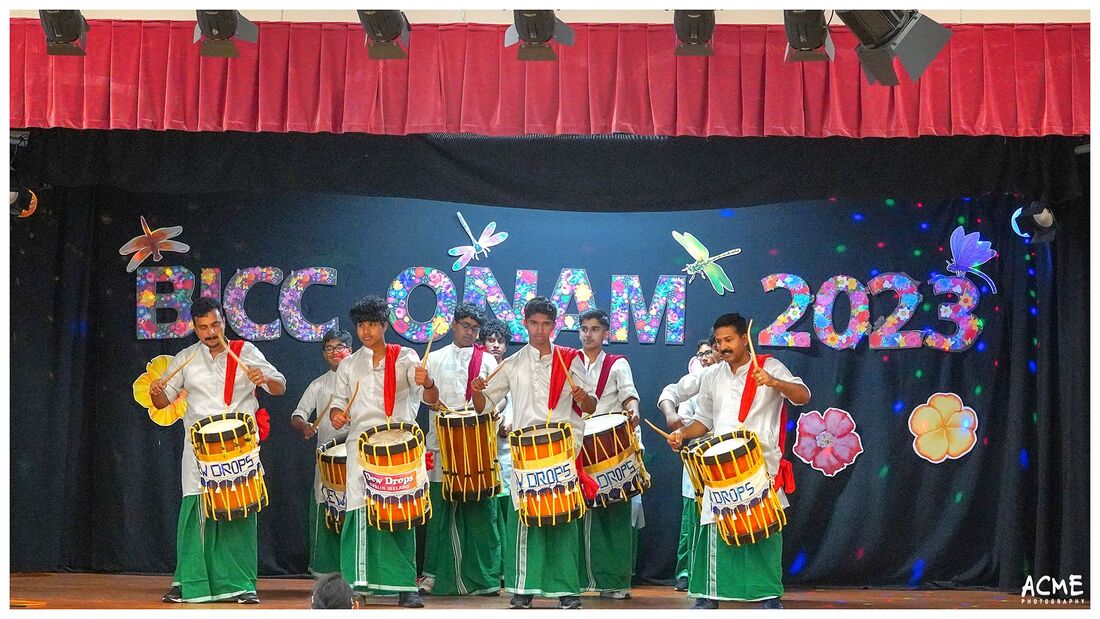

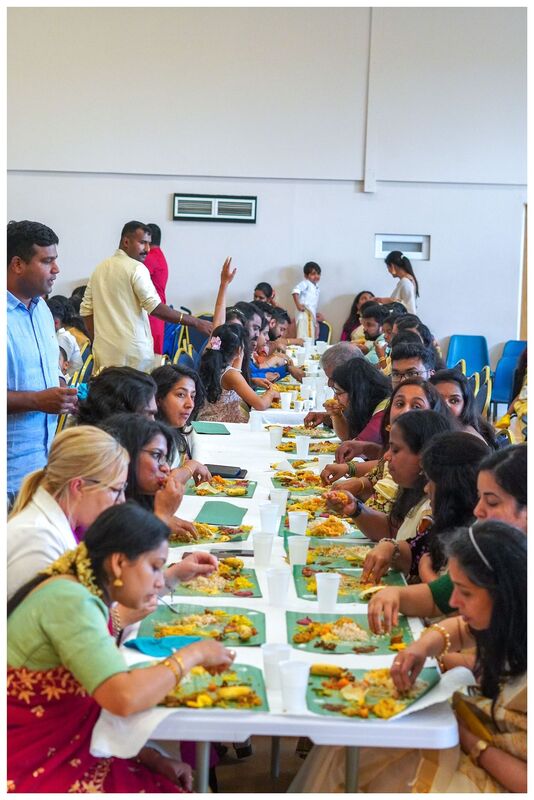
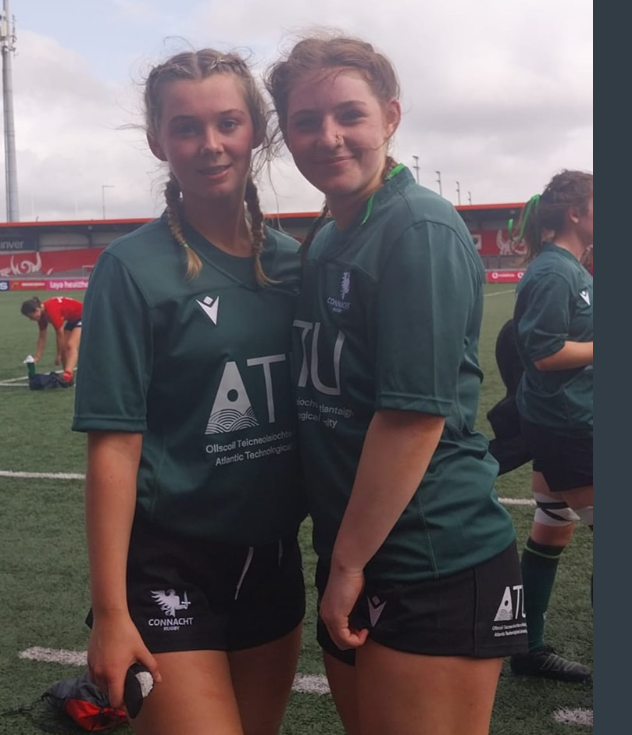
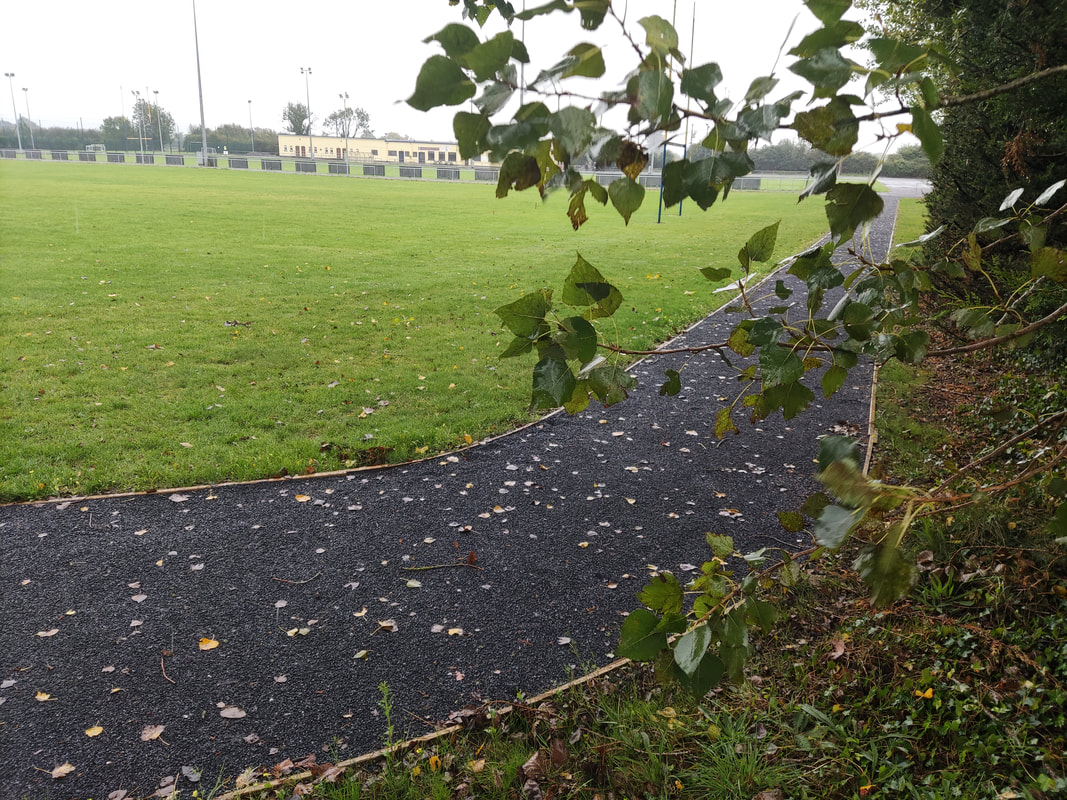
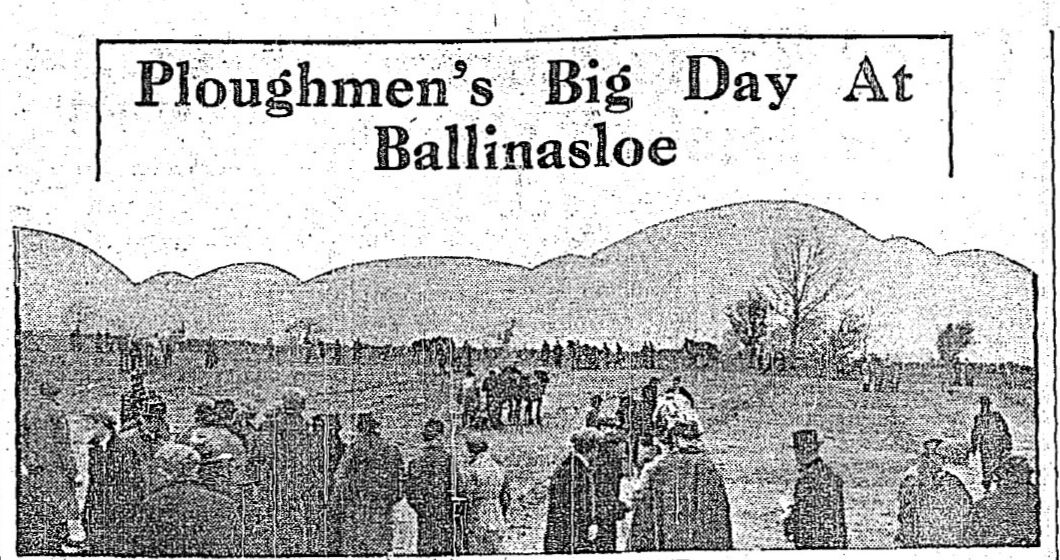
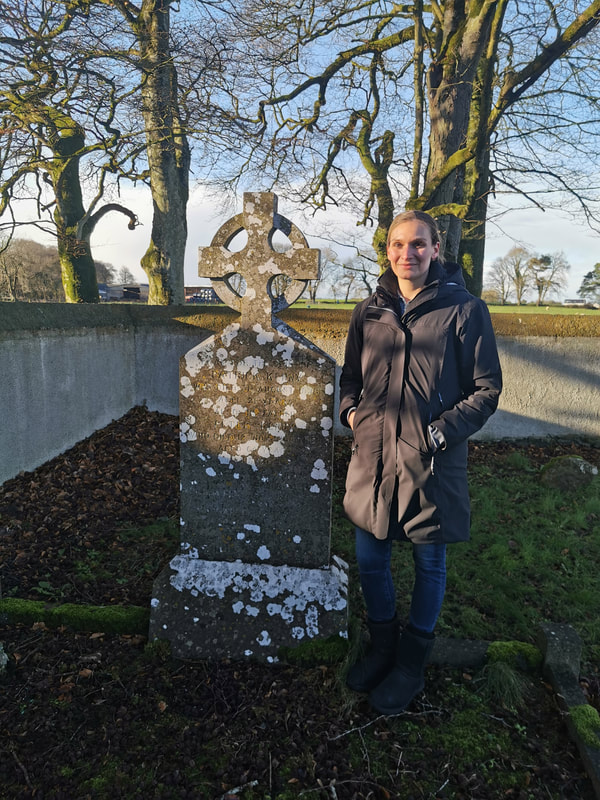
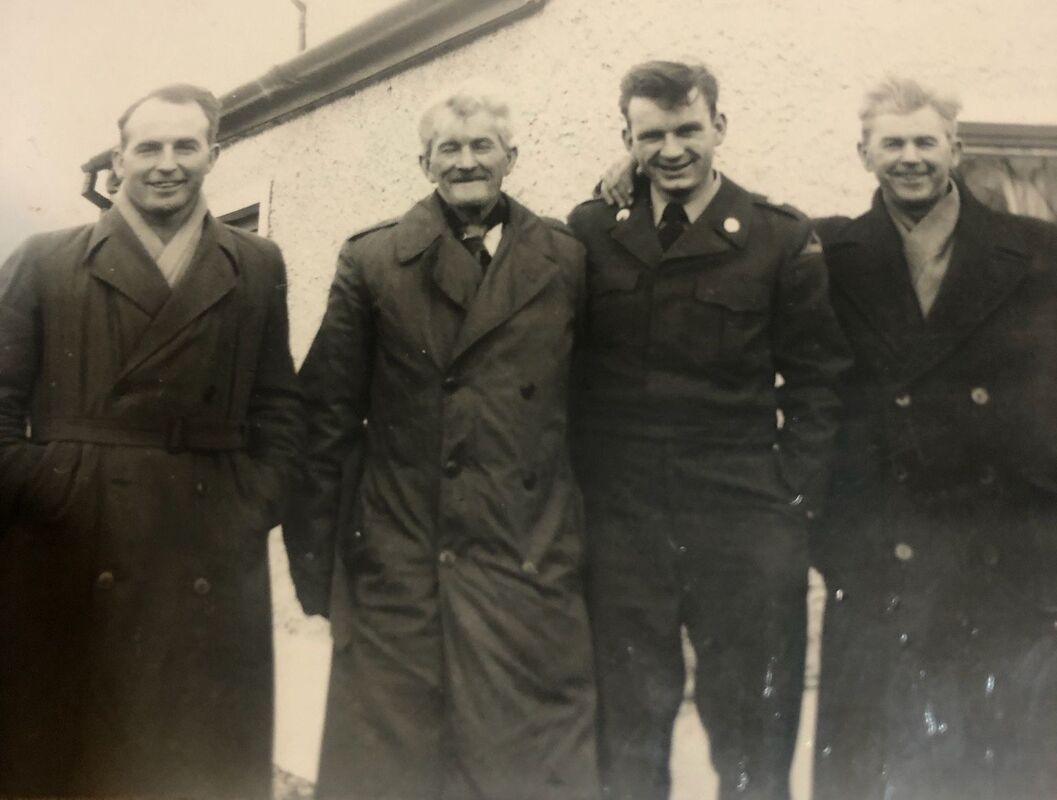
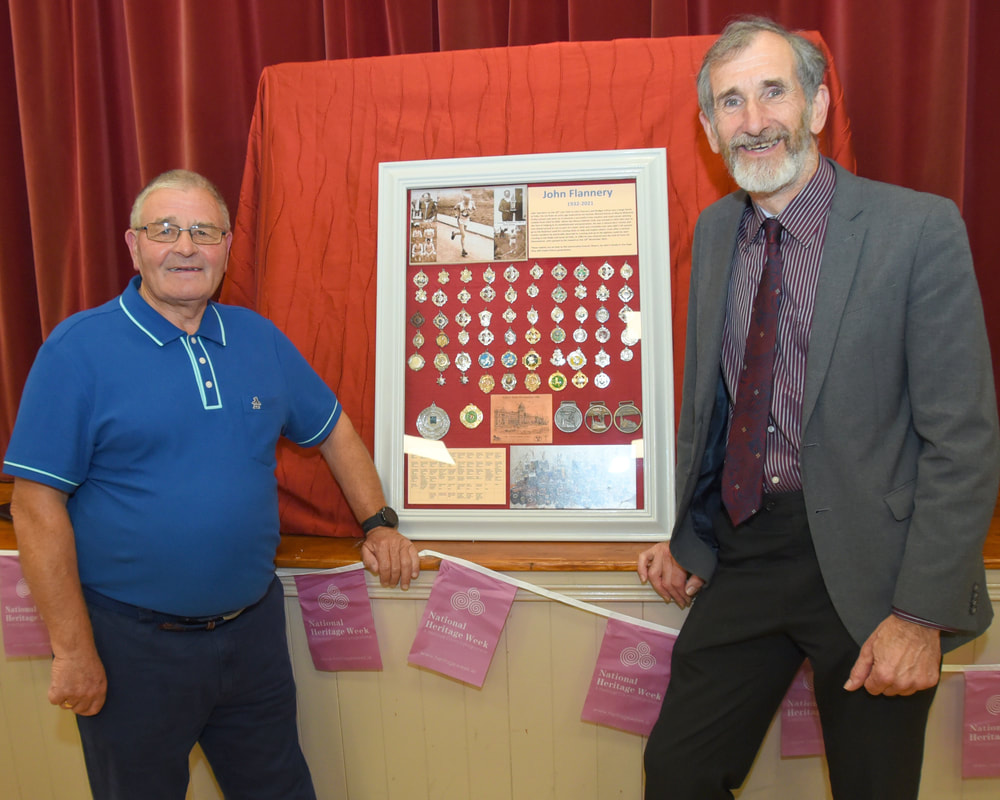
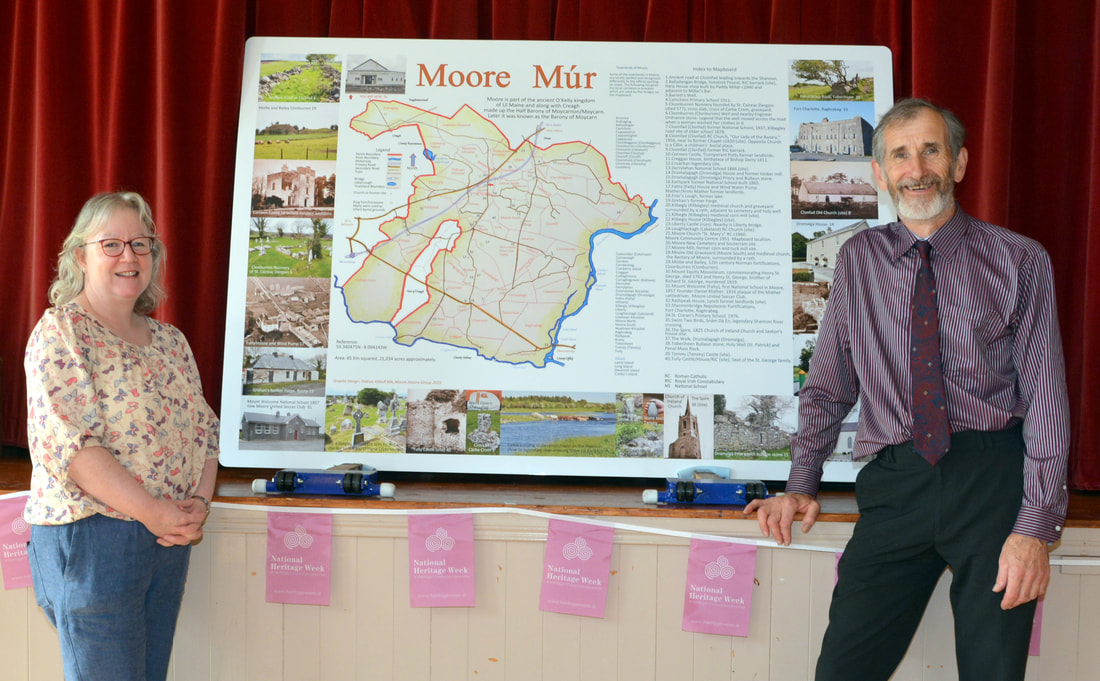
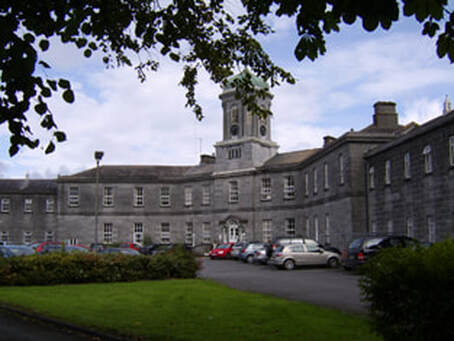
 RSS Feed
RSS Feed
